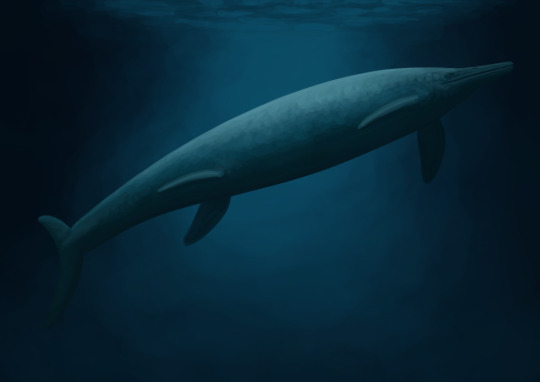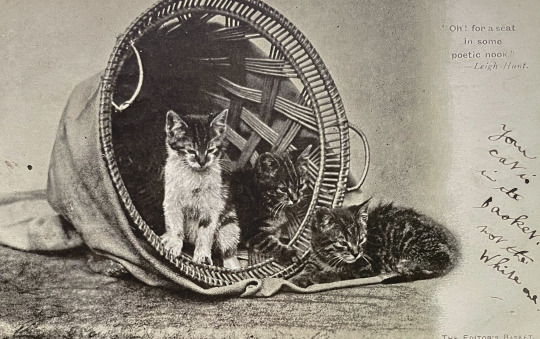If you ever followed me for something specific, I'm sorry. Not spoiler-free. DMs and asks open.header by graphi-horse-timeavatar from Gabriel Dell'Otto's Princess Leia #3 cover
Last active 2 hours ago
Don't wanna be here? Send us removal request.
Text




Flocking 5-30-25
Himalayasaurus, Typothorax, Lunataspis, Kunpengopterus
48 notes
·
View notes
Text




Doodles from yesterday's flocking paleostream featuring Himalayasaurus, Typothorax, Lunataspis, and Kunpengopterus.
416 notes
·
View notes
Text

Broad-banded Pit Viper or Sulawesi Pit Viper (Tropidolaemus laticinctus), family Viperidae, Sulawesi, Indonesia
Venomous.
photograph by The Nature Project
302 notes
·
View notes
Text

“Oh for a seat in some poetic nook.” Postcard from my collection, sent 1904.
1K notes
·
View notes
Text

Black-capped lory. Used all four (count them, FOUR) of my ballpoint pen colours, then a Polychromos for the beak and eyes
-3074
355 notes
·
View notes
Text
18K notes
·
View notes
Photo



Three times David A Hardy used the same building design in his art
2K notes
·
View notes
Text
Fiona: I have to share the caravan with Vaughn and Rhys. Every night, it's disgusting - Sasha: Well, I don't want to hear about it. Fiona: Rhys tries on all of his outfits for the next day and makes us watch him walk in them.
18 notes
·
View notes
Photo

A pair of silver tefillin boxes, probably Polish, 19th century
109 notes
·
View notes
Text


Beverley and Trevor have waited Very Bravely together today while their tank was cleaned! (They helped with Staring!)
261 notes
·
View notes
Text

Clones seeing a muddy puddle for the first time: *surprised pikachu face*
#LMAO#doing this to boss delta squad#literally just had him having a small crisis over large insects like. existing.
1K notes
·
View notes
Text
lol ok anyways *makes my character go through unnecessery amounts of trauma*
3K notes
·
View notes
Text

This is a beautiful Aquamarine crystal Naturally terminated from shigar Pakistan. Photo ©️ Star_minerals_collection
262 notes
·
View notes
Text
Inviting all my mutuals to Indianapolis so we can go take over the children's museum and play on the big dinosaurs
163 notes
·
View notes
Text
Round 3 - Actinopterygii - Characiformes




(Sources - 1, 2, 3, 4)
Order: Characiformes
Common Name: “characins”
Families: 28 - Citharinidae (“lutefishes”), Distichodontidae, Crenuchidae, Alestidae (“African tetras”), Lepidarchidae (“Niger Tetra” and “Adonis Tetra”), Hepsetidae (“African pikes”), Tarumaniidae (“Muckfish”), Erythrinidae (“trahiras”), Parodontidae (“darter tetras”), Cynodontidae (“dogtooth characins”), Serrasalmidae (“pacu”, “piranha”, “silver dollar”, and kin), Hemiodontidae, Anostomidae (“toothed headstanders”), Chilodidae (“headstanders”), Curimatidae (“toothless characins”), Prochilodontidae (“flannel-mouthed characins”), Lebiasinidae, Ctenoluciidae (“pike-characins”), Chalceidae (“tucanfishes”), Triportheidae (“hatchet characins”), Gasteropelecidae (“freshwater hatchetfish”), Bryconidae, Iguanodectidae, Acestrorhynchidae (“freshwater barracudas” and “biting tetras”), Spintherobolidae (“piquiras”), Stevardiidae, Characidae, and Acestrorhamphidae (“American tetras”)
Anatomy: resemble Cypriniformes, but have a small, fleshy adipose fin between the dorsal fin and tail; most species have teeth; well-defined scales; have a Weberian apparatus, a series of bony parts connecting the swim bladder and inner ear
Diet: wide variety: many are carnivorous, eating prey ranging from fish to insects; some eat plants, nuts, and/or algae
Habitat/Range: Africa and Americas, are most diverse in the Neotropics; found in lakes and rivers
Evolved in: Late Cretaceous

Propaganda under the cut:
The largest characin is the Goliath Tigerfish (Hydrocynus goliath) (image 3), which has an average adult length of 1.5 m (4.9 ft) and a weight of 50 kg (110 lb), and a maximum recorded length of about 2 m (6.6 ft) and weight of 70 kg (154 lb). The Goliath Tigerfish is known for its large, interlocking, dagger-like teeth, used for biting into prey fish. On average each of its teeth can grow up to 2.5 cm (1 in) long, comparable to the tooth size of a Great White Shark!
The Bolivian Pygmy Blue Characin (Xenurobrycon polyancistrus) is the smallest characin, with adults growing up to 1.4 cm (0.55 in) long.
Many of the most popular freshwater aquarium fish belong to this order, namely the small, colorful, peaceful “tetras”, which are often kept in tropical community tanks.
Relative to body mass, the Black Piranha (Serrasalmus rhombeus) produces one of the most forceful bites measured in vertebrates. It is also the largest species of piranha, with a maximum length of 41.5–61 centimetres (1.4-2 feet). These fish are opportunistic and omnivorous feeders which will eat plants, fallen fruits, and animals smaller than themselves such as insects and small fishes. They are also scavengers, and will feed on carcasses within the river.
The Red-bellied Piranha (Pygocentrus nattereri) (image 1) makes sounds to communicate with other members of its school, usually when exhibiting aggressive behavior such as biting, chasing, confrontation, and fighting. When handled by humans, they emit a drumming-like sound, consisting of a low-frequency harmonic sound. The sounds created by piranhas are generated through rapid contractions of the sonic muscles and is associated with the swimbladder. The swimbladder may play an important role in sound production as a resonator.
Piranhas (subfamily Serrasalminae) are some of the most misunderstood fish. While the schooling omnivores do sometimes bite bathers and swimmers, and will feed on drowned corpses, serious attacks are rare, and the fish generally avoid humans. Only two fatal attacks are known. They are eaten by humans far more often than the other way around! Their reputation as voracious predators is due to a “prank” once played on former US president Theodore Roosevelt, when he visited Brazil in 1913. Local fishermen had blocked off part of the river for days, starving the piranha in anticipation of Roosevelt’s visit. While the president watched, the fishermen pushed a cow into the water, which was quickly torn apart by the starving fish. Roosevelt went on to describe piranhas as vicious creatures which could skeletonize a cow in seconds in his 1914 book Through the Brazilian Wilderness.
Pacu, herbivorous members of the Serrasalmidae family, have large, molar-like teeth, used for crushing nuts that fall from trees. Their reputation for “biting testicles” comes from a joke that got out of hand! In 2013, a pacu was caught in the Øresund, a strait between Sweden and Denmark. A professor stated in a news release that the fish use their teeth to crunch on nuts, so “anyone choosing to bathe in the Oresund these days had best keep their swimsuits well tied!” The statement got a bit too much publicity, leading to a rumor that pacu will actually bite people’s balls off. Goes to show that media literacy has been dying for quite a while now, and not just on Tumblr.
23 notes
·
View notes
Text








Eliot Spencer in The Cooling Off the Job (S03E08) LEVERAGE: REDEMPTION (2021—)
400 notes
·
View notes
